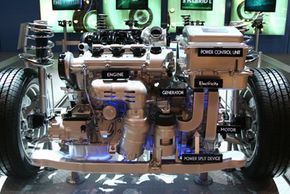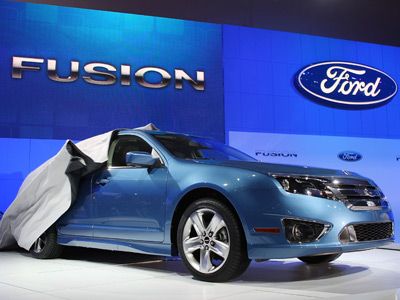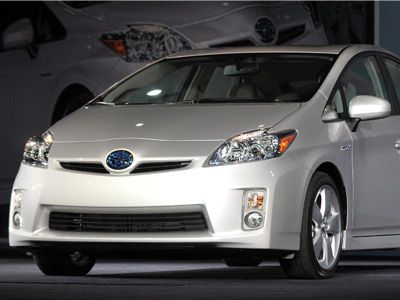Hybrid vehicles are virtually synonymous with eco-friendly driving, but that doesn't mean these fuel-efficient vehicles can't produce enough power to knock you square into the backseat if necessary.
Before we can talk about hybrid engine power, let's first explain how hybrid engines work. Hybrid engines combine two different sources of power to move the vehicle. The first source is the traditional internal combustion engine, which produces power by burning fuel, usually gasoline. The second source is usually an electric motor that gets its power from a battery pack within the vehicle. The engine and the electric motor work together to produce the power the vehicle needs to operate. However, the internal combustion engine in a hybrid car is typically much smaller than usual for efficiency and to accommodate the electric motor. This dichotomy raises a big question for green driving enthusiasts wanting to combine engine performance and fuel economy: How can a hybrid engine create more power?
Advertisement
One way to boost hybrid power is to update the batteries. For instance, the battery pack used in the third-generation Toyota Prius is smaller and more efficient [source: Garrett] than those in previous versions of the car, which gives it a slightly higher power output [Source: Voelcker]. The second generation's battery pack was rated for 28 horsepower, compared to the third generation's 36 horsepower [source: Toyota]. Although it's only a slight power improvement over earlier generations, battery technology is moving towards lithium-ion batteries that can potentially produce even more power in the near future.
These new batteries have plenty of upside: Lithium-ion batteries can produce more power in the same amount of space, because lithium has a greater energy density than the nickel metal hydride batteries used in most hybrids -- and it weighs less as well. Due to these advantages, you may start to see lithium-ion batteries used in hybrid vehicles relatively soon.
In addition to installing more powerful batteries, the electric motors can increase their power by upping the voltage. The 2010 Prius increases its power from a 500-volt system in the previous version, to 650 volts in the redesigned model [Source: Toyota].
It's easy to see that an increase in electric motor power, combined with a powerful combustion engine, is just the recipe needed to create a hybrid that can rival traditional vehicles.
Go on to the next page to see how hybrids can attain serious horsepower output while managing to keep their fuel efficiency up.
Advertisement



